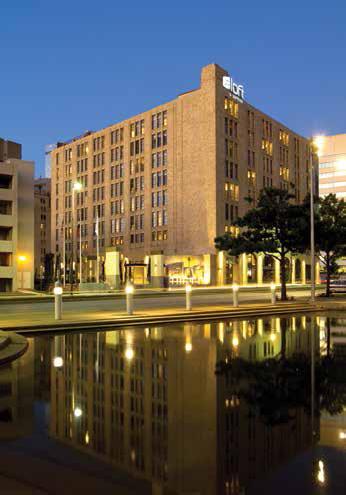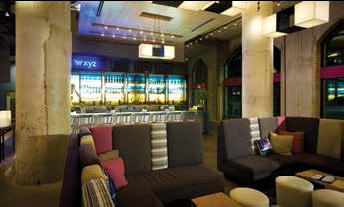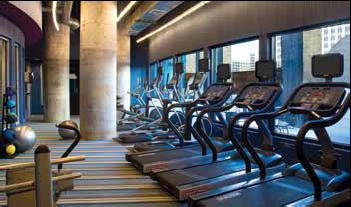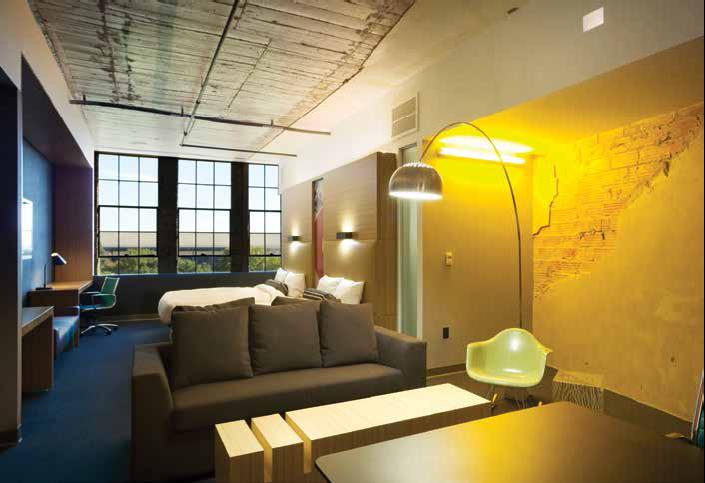
TJ
Japan Entertainment News
Den of Horror
Did ”The Ring” leave you rabid for ”The Ring Two?” Do you hold a grudge because “The Grudge” ( Ju-on) hasn’t released another supernatural sequel? Then Horipro, a Japanese international talent agency more than 50 years in the business, may have just launched a YouTube channel for you! The chilling channel called Hora no soukutsu (Den of Horror) contains 100 Japanese ghost and horror stories, original dramas, shocking videos and a horde of horror-related YouTube links. More is to come. This sinister site will be upgraded from April 2013 to include original content from vocational school students and creative YouTubers. If you don’t speak Japanese, don’t fear. You can translate the captions into English, Chinese and many other languages with the YouTube CC option button. But be warned... do not watch this site alone. Subscribe to Den of Horror, if you dare:
Discover Tokyo
Ginza
Ginza is Japan’s world class shopping and food hub. World famous brand stores rub shoulders with high class department stores while the area is jammed with quality restaurants where you can savor Michelin starred sushi or traditional Japanese cuisine. Other favorite attractions are the food halls in the basement floors of department stores. They feature all imaginable food varieties, from a diverse range of sweets, to alcohol and regional food specialties.
Shinjuku, Kabukicho
With over 3 million users daily, Shinjuku Station lays claim to the title of the busiest station in the world. In the vicinity is the beautiful park Shinjuku Gyoen national garden. There are commercial districts with high rise buildings, department stores and large electronics retail stores. Japan’s largest entertainment district, Kabukicho, is also located right near the station. The area is packed until late at night with patrons attending high class nightclubs, casual pubs, karaoke, and pachinko venues.
Ryogoku and the Edo-Tokyo Museum
Adjacent to Asakusa is Ryogoku, the Sumo precinct. Numerous sumo stables are located here and Tokyo Grand Sumo Tournaments are held at Ryogoku Kokugikan (Sumo Hall) in January, May and September. A distinctive feature of this area is the restaurants that serve Chanko-nabe, a dish eaten by sumo wrestlers. Just nearby is the Edo-Tokyo Museum which exhibits the history of Tokyo from samurai days to the present.
Korean Band Fad Goes Global
Two of South Korea’s biggest bands, TVXQ! and Super Junior, have taken their tours global as demand for K-pop grows around the world.
K-Pop Continues to Go Global
TVXQ!
TVXQ!, known as Dong Bang Shin Ki in South Korea, Tong Vfang Xien Qi in China and Tohoshinki in Japan, has twice held the Guinness World Record for the largest fan club in the world, with more than 800,000 in South Korea alone. They hold the current Guinness World Record for being the Most Photographed Celebrities in the World with more than 500 million photos taken. TVXQ! launched their “TVXQ! Live World Tour ‘Catch Me’” in November 2012 in Seoul before heading to China, Taiwan and elsewhere around the world. They made history by touring 11 cities in Japan between January and April 2012, doing a total of 26 shows as part of their “TVXQ! Live Tour 2012 ~TONE” with more than 550,000 in attendance.
Living Legend: Toyo Ito
2013 Pritzker Architecture Prize Laureate Interview by Dr. Anthony Al-JamieIN March 2013, it was announced that 71-year old Tokyo-based Toyo Ito is the 2013 Pritzker Architecture Prize recipient.The Pritzker Architecture Prize is awarded annually to a living architect whose “built work demonstrates a combination of those qualities of talent, vision and com- mitment, which has produced consistent and significant contributions to humanity and the built environment through the art of architecture.” The laureates are awarded a $100,000 grant and a bronze medallion.
Previous Japanese recipients were Kenzo Tange (1987), Fumihiko Maki (1993), Tadao Ando (1995), and Kazuyo Seijima & Ryue Nishizawa (2010).
TJ: Congratulations on winning the Pritzker Architecture Prize! It is the biggest award in architecture.
ITO: Yes. After it was announced, many architects from all over the world sent me congratulations. I was so surprised that it is such a big award!
TJ: Who congratulated you?
ITO: Yes. After it was announced, many architects from all over the world sent me congratulations. I was so surprised that it is such a big award!
Where Tradition Meets Modern Taste
Morita Nenohi is a legendary sake brewer south of Nagoya, Japan. It was established in 1665 by the Moritas, a family best known for the fifteenth head of the family business: Sony co-founder Akio Morita. Nenohi is a dry, well-balanced sake.
Legendary Morita Nenohi Sake
It is made using traditional techniques augumented with modern spirits to produce a satisfying taste for a wide range of people around the world. It can be savored chilled, warm or at room temperature.
The following is Morita’s traditional brewing process for the Nenohimatsu “Super Premium Daiginjo (Fine Rice Sake):
Aloft is Alift for the Senses
AS I walked into the lobby of the Aloft Downtown Dallas hotel, I wasn’t expecting much out of the ordinary in this historic-looking, factory- type building in downtown Dallas.
AS I walked into the lobby of the Aloft Downtown Dallas hotel, I wasn’t expecting much out of the ordinary in this historic-looking, factory- type building in downtown Dallas. But I immediately did a double take. It looked like I’d wound up at a mixture of a hip nightclub, art gallery, and trendy café. Soon enough, however, I was pleasantly surprised to find I was where I wanted to be: the Aloft Downtown Dallas.
Owned by Starwood Hotels & Resorts, the group that also has chains like Westin, Sheraton, W Group, Regis and Le Méridien, Aloft is an enjoyable change from the norm. I don’t usually wander hotel corridors to admire the interior design, but Aloft inspired me to do so. When I first checked into my room, I had to stroll around a few times to take it all in. After I sat down to relax, I walked around the room again just to see if I’d missed anything (which I had!). Then looking out my window across the street at the Dallas Convention Center, train station and City Hall, I was reminded how conveniently located the hotel is. For frequent travelers, hotels are a blur of similar designs. That’s not the case with Aloft. It is a lift for the senses.
Aloft is a “select” service hotel that does not have bellmen but caters to on-the- move business-savvy travelers who know what they want. The other primary segment of their clientele includes guests attending conferences at the convention center across the street.
AS I walked into the lobby of the Aloft Downtown Dallas hotel, I was not expecting much out of the ordinary in this historic-looking, factory- type building in downtown Dallas. But I immediately did a double take. It looked like I had wound up at a mixture of a hip nightclub, art gallery, and trendy cafe. Soon enough, however, I was pleasantly surprised to find I was where I wanted to be: the Aloft Downtown Dallas.
Aloft is a self service hotel that does not have bellmen but caters to on-the-move business-savvy travelers who know what they want. The other primary segment of their clientele includes guests attending conferences at the convention center across the street.
The lobby has different areas to relax in: a bar, lounge and a self-serve snack and coffee area that has a “build your own” fresh and hot breakfast and complimentary coffee in the morning. All of the decor appears out of the latest interior design magazine. I don’t think I’ve ever seen rocking chairs in a hotel lobby before, but the modern-retro design made the chairs fit right in. At night, the hotel is a great place to mix and mingle by enjoying a glass of vino at the w xyz bar, or a game of pool in their re:mix lounge. Both are located in the lobby area.
There are event and meeting spaces of various sizes throughout the building. The event facilities are extremely vibrant and trendy and have been used for After Parties; by celebrities such as Britney Spears and Jamie Foxx. The hotel is pet friendly and smoke-free. Free WiFi is available throughout the building. There are 24-hour business and fitness centers, an outdoor pool, onsite parking and Blink electric car charging stations. Rooms come with complimentary coffee, tea and bottled water. Standard rooms are 350 to 475 square feet with one TV. Suites are 450 to 775 square feet with a larger meeting and work area and two TVs, one in the work area and one for the bed and living area. The 42” LCD TVs have ports for connecting laptops or other electronic devices.
Aloft Hotels take part in adaptive reuse projects to provide benefits to communities in search of urban renewal opportunities, and the Aloft Downtown Dallas is no different. Built originally in 1925 as part of the Santa Fe Terminal Complex, then owned by the Haggar Clothing Co. which used the facilities to produce military uniforms during World War II, the building was renovated and opened as a hotel in 2009.
For the sustainability minded guest, there is plenty with re-used demolition debris, natural materials and built-in liquid soap and shampoo dispensers.
 |
 |
|
 |
 |
|
 |
 |
|
 |
||
Where to Stay in Tokyo
See TJ's recommendations on where to stay in Tokyo - ranging from the luxurious Westin Tokyo, to the affordable Nippon Seinankan Hotel to 'homestay' style accommodations through www.homerent.jp
Tokyo Weekend Excursions
Take a weekend excursion outside of Tokyo at the haven for artists Art Biotop in Nasu, or see the beautiful Mt. Fuji near Seikai Yamanaka Lakeside Hotel or the Fuji-Hakone Guest House.
Peace Boat
Peace Boat is sailing the seas for peace and sustainability. Founder Tatsuya Yoshioka shares how Peace Boat has evolved since 1983 and how Peace Boat seeks to make our world a better place.























